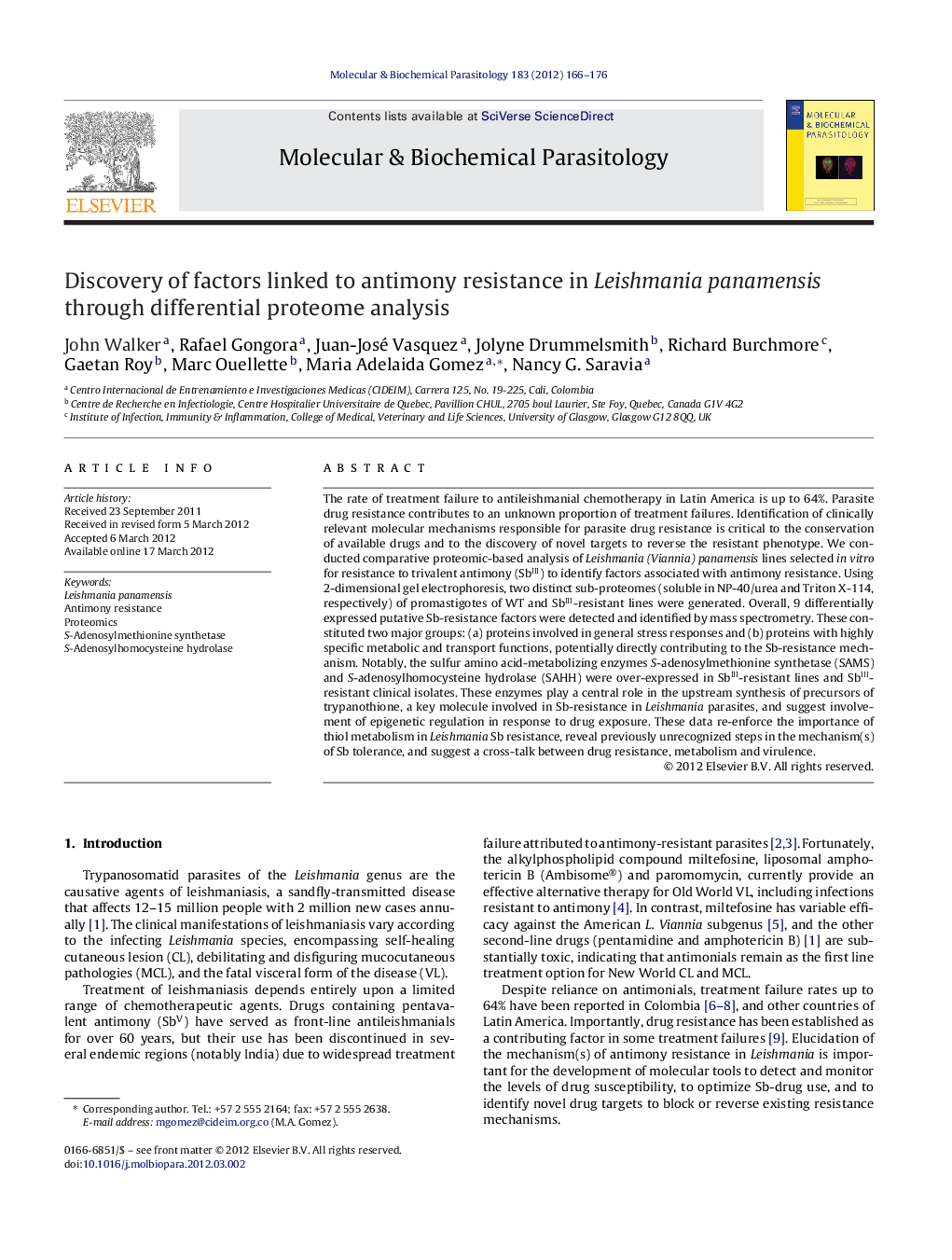| کد مقاله | کد نشریه | سال انتشار | مقاله انگلیسی | نسخه تمام متن |
|---|---|---|---|---|
| 5915521 | 1163306 | 2012 | 11 صفحه PDF | دانلود رایگان |

The rate of treatment failure to antileishmanial chemotherapy in Latin America is up to 64%. Parasite drug resistance contributes to an unknown proportion of treatment failures. Identification of clinically relevant molecular mechanisms responsible for parasite drug resistance is critical to the conservation of available drugs and to the discovery of novel targets to reverse the resistant phenotype. We conducted comparative proteomic-based analysis of Leishmania (Viannia) panamensis lines selected in vitro for resistance to trivalent antimony (SbIII) to identify factors associated with antimony resistance. Using 2-dimensional gel electrophoresis, two distinct sub-proteomes (soluble in NP-40/urea and Triton X-114, respectively) of promastigotes of WT and SbIII-resistant lines were generated. Overall, 9 differentially expressed putative Sb-resistance factors were detected and identified by mass spectrometry. These constituted two major groups: (a) proteins involved in general stress responses and (b) proteins with highly specific metabolic and transport functions, potentially directly contributing to the Sb-resistance mechanism. Notably, the sulfur amino acid-metabolizing enzymes S-adenosylmethionine synthetase (SAMS) and S-adenosylhomocysteine hydrolase (SAHH) were over-expressed in SbIII-resistant lines and SbIII-resistant clinical isolates. These enzymes play a central role in the upstream synthesis of precursors of trypanothione, a key molecule involved in Sb-resistance in Leishmania parasites, and suggest involvement of epigenetic regulation in response to drug exposure. These data re-enforce the importance of thiol metabolism in Leishmania Sb resistance, reveal previously unrecognized steps in the mechanism(s) of Sb tolerance, and suggest a cross-talk between drug resistance, metabolism and virulence.
The profile of Sb-resistance factors in Leishmania panamensis includes proteins involved in multiple cellular processes and suggests cross-talk between drug resistance, metabolism and virulence.67Highlights⺠Resistance to Sb-drugs is in part mediated by regulation of upstream precursors of trypanothion. ⺠Profile of Sb-resistance factors suggests cross-talk between drug resistance, metabolism and virulence. ⺠Complexity of Sb-resistance is attested by involvement of “non-conventional” resistance mechanisms.
Journal: Molecular and Biochemical Parasitology - Volume 183, Issue 2, June 2012, Pages 166-176